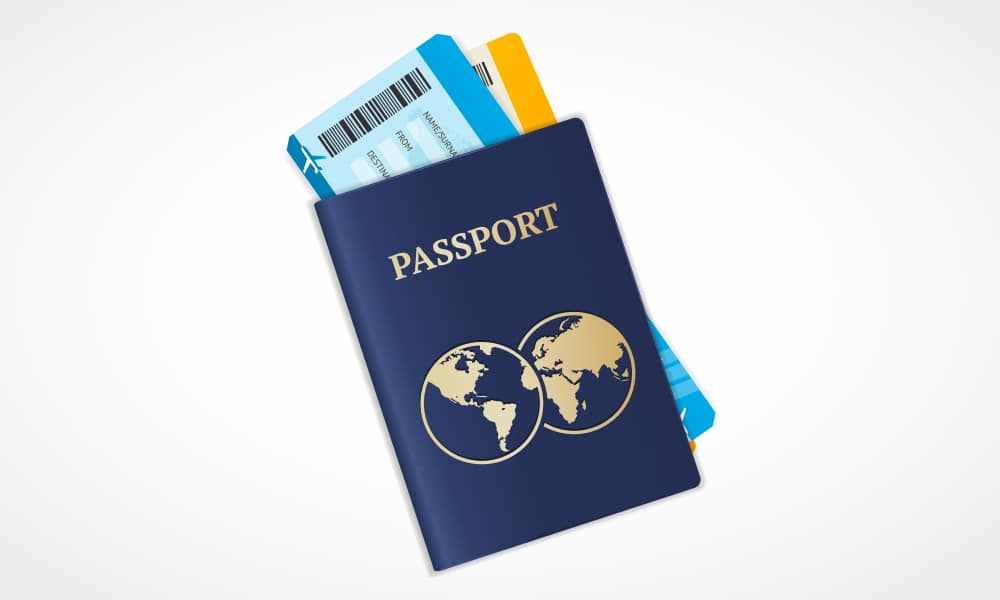- 1
- 2
- 3
- 4
- 1Destinations
- 2Trip Date
- 3Travellers
- 4Medical history
Popular Destinations

Now covers COVID-19
Maldives Solo Travel
The Maldives is a tropical paradise in the Indian Ocean, renowned for its stunning atolls, pristine beaches, and vibrant coral reefs, with over 1,000 islands. The Maldives is perfect for solo travellers seeking relaxation, adventure, and a chance to connect with nature. Whether you're lounging on a sun-kissed beach or diving among colourful fish, the travel tips and advice for Maldives in this guide have you covered. It offers an accessible, rewarding experience for solo travellers.
Travel Insurance Plans on PolicyBazaar#1
- Individuals
- Sr. Citizens
- Students
Is Maldives Good for Solo Travel?
The Global Health Security Index ranks the Maldives 118th out of 195 countries, with an overall score of 32.0. This score reflects moderate preparedness for health emergencies, with areas like emergency response and risk communication showing room for improvement. However, socio-economic resilience and political stability are relatively strong, which helps create a secure environment for travellers. The Maldives remains a safe destination, with sufficient public health infrastructure, though caution is recommended in crowded areas.
While the Maldives is mainly safe, it is recommended that you be careful in crowded areas or at night to ensure a comfortable trip.The tourist police helpline (119 or 332) is available for emergencies, and staying alert in busy areas can help avoid petty theft.
Best Places to Visit in Maldives
The Maldives provides a range of activities, from taking in the tranquil beaches and marine life of Baa Atoll and Vaadhoo Island to touring the cultural landmarks of Malé. Every resort has a distinct charm that suits a range of traveller tastes.
-
Malé
It is home to historical sites, local markets, and modern infrastructure, making it a must-visit for those interested in Maldivian culture. Visitors can explore the Maldives Islamic Centre, a stunning architectural marvel, and the National Museum, which showcases the nation's rich heritage.
-
Maafushi Island
Maafushi is one of the more popular local islands for budget travellers. It offers a variety of activities, including snorkelling, scuba diving, and water sports. The island has a lively ambience with local shops and cafés where visitors can sample traditional Maldivian dishes.
A unique aspect of Maafushi is its commitment to promoting responsible tourism, allowing travellers to engage with the local community while enjoying the island's natural beauty.
-
Baa Atoll (Biosphere Reserve)
Baa Atoll is a UNESCO Biosphere Reserve and one of the best places to explore marine life in the Maldives. It is famous for Hanifaru Bay, where you can see manta rays and whale sharks during the season. Visitors can engage in snorkelling and diving to explore the vibrant coral reefs teeming with marine life.
-
Vaadhoo Island (Bioluminescent Beach)
Vaadhoo Island is famous for its bioluminescent plankton, which lights up the shoreline at night, creating a magical "sea of stars" effect.
-
Banana Reef
One of the most famous dive sites in the Maldives, Banana Reef is teeming with marine life and vibrant coral formations. The clear waters and rich biodiversity make it a hotspot for novice and experienced divers.
-
Addu Atoll (Seenu Atoll)
Addu Atoll is located in the southernmost part of the Maldives and offers cultural and natural attractions. Visitors can explore historic sites, including remnants of British colonial presence, and enjoy water activities such as diving and snorkelling. The atoll is also famous for its diverse marine life and coral reefs, making it a popular spot for diving enthusiasts.
-
Ari Atoll
Ari Atoll is known for its luxurious resorts and exceptional diving spots, making it a top destination in the Maldives. Key attractions include Maaya Thila, one of the world's premier dive sites, and areas renowned for whale shark sightings.
-
Thulusdhoo Island
A hidden gem, Thulusdhoo is known for its excellent surfing opportunities, laid-back atmosphere, and affordable accommodation options. It attracts surf enthusiasts from around the globe. Home to the renowned Coke's surf break, the island offers challenging waves ideal for experienced surfers.
-
Fulhadhoo Island
Fulhadhoo Island is an excellent choice for solo travellers looking to escape the crowds and immerse themselves in the natural beauty of the Maldives. This secluded island features stunning white-sand beaches and crystal-clear waters, making it a peaceful retreat.
-
Fihalhohi Island
Located in the South Malé Atoll, Fihalhohi Island is perfect for those seeking a tropical paradise with plenty of relaxation opportunities and easy access to water activities. This captivating destination is renowned for its beautiful coral reefs, perfect for snorkelling and diving among vibrant marine life.
| Places to Visit | Opening Hours |
| Baa Atoll (Hanifaru Bay) | 6:00 AM - 6:00 PM |
| Vaadhoo Island (Bioluminescent Beach) | Open 24/7 |
| Banana Reef | Open 24/7 |
| Addu Atoll (Gan Island) | Open 24/7 |
| Ari Atoll | 6:00 AM - 6:00 PM |
Solo Travel Advice for Maldives
Solo travel in the Maldives can be exciting and enjoyable. However, familiarise yourself with outdoor activities, transport, and local customs. These latest travel advice for Maldives will help make your journey safe and fulfilling:
Safety in the Maldives
The Maldives is a safe country, especially for solo travellers. Crime rates are low, and the local population is friendly. Private resorts are incredibly secure, with strict regulations and 24/7 security. Local Islands are still safe, but be mindful of local customs and dress modestly. Avoid walking alone on local islands late at night, especially in unfamiliar areas.
Budgeting for Solo Travel
Local islands like Maafushi, Thulusdhoo, and Dhigurah offer budget-friendly guesthouses, local eateries, and affordable activities, making them ideal for solo travellers on a budget.
Snorkelling, diving, and island-hopping are everyday activities. Booking these experiences in groups or through guesthouses often makes it more affordable for solo travellers.
Cultural Considerations
On local islands, dress modestly in public areas. While bikinis are allowed on resort islands or designated "bikini beaches" on local islands, you should cover up in villages and public places.
Many services, shops, and restaurants may close for Friday prayers on local islands, especially from 11:00 AM to 2:00 PM.
Solo Travel Essentials
Purchase a local SIM card at the airport for reliable internet access. Many resorts and guesthouses offer free Wi-Fi, but connectivity on public ferries may be limited. While resorts accept credit cards, carry some local currency (Maldivian Rufiyaa), especially for purchases on local islands. ATMs are primarily available in Malé and a few significant islands.
Plan Excursions in Advance
Popular activities like diving or dolphin cruises can be booked quickly, so planning excursions is advisable.
Stay on a Mix of Islands
For a well-rounded experience, consider staying on a local island (for culture) and a resort island (for relaxation).
Where to Stay as a Solo Traveller in Maldives
As a solo traveller in the Maldives, you'll find various accommodation options ranging from budget guesthouses on local islands to luxury resorts. There is a range of accommodations ideal for solo travellers, from budget-friendly hostels to capsule hotels and Airbnb options. Here are some recommended places to consider during your trip:
Malé
For those on a budget, hostels like Reef Guest House and Tourist Inn offer comfortable social spaces to meet other travellers. Capsule hotels provide privacy and affordability and are popular amongst solo visitors.
Maafushi Island
It offers unique homestay options like Sunrise Beach and Island Ambience, allowing guests to connect with local families. These homestays provide an authentic cultural experience, allowing visitors to immerse themselves in the daily lives of Maldivians. Guests can also enjoy homemade meals prepared by their hosts, adding to the rich cultural exchange.
Baa Atoll (Biosphere Reserve)
Hanifaru Bay is centrally located and ideal for a tranquil getaway. It offers various Airbnb options that cater to solo travellers, providing privacy and comfort at reasonable prices. Staying in this area allows guests to explore the beautiful surroundings while enjoying local culture.
How to Get Around in Maldives
Due to its unique geography of over 1,190 islands across 26 atolls, getting around the Maldives involves a mix of transportation methods. Travel is primarily facilitated by speedboats, ferries, and seaplanes, which connect inhabited islands and resorts. Some islands also have roads for exploring by bicycle or scooter.
Domestic Flights
Domestic flights connect Malé to the more distant atolls and local islands, making them ideal for reaching remote destinations or luxury resorts far from the capital. These flights facilitate quick access to distant islands, particularly those in the southern and northern Maldives. The leading domestic carriers are Maldivian Airlines and FlyMe, which operate regular services to various islands.
Speedboats
Speedboats are one of the fastest and most common ways to travel between islands in the Maldives. They are convenient for those staying on local islands or resorts near Malé or nearby atolls like Maafushi and Guraidhoo.
Public Ferries
Government-operated ferries provide a budget-friendly way to travel between islands. Use public ferries if you're on a local island hopping trip and are not in a rush. Ferries generally run 2 to 3 times weekly, so planning is essential. Ferries can be accessed from Malé's Villingili Ferry Terminal.
Dhoni (Traditional Boats)
The dhoni is a traditional Maldivian boat, often used for short trips or as part of an excursion. Dhonis are generally used for local fishing, island hopping, or snorkelling tours.
Taxis and Motorbikes in Malé
Taxis are readily available in Malé and Hulhumale, the adjoining island, making it easy to get around for sightseeing or catching ferries. Additionally, visitors can book an Uber or rent a motorbike for more flexibility in exploring the area. These transportation options provide convenient ways to navigate the islands and enjoy local attractions.
Packing The Essentials For Your Maldives Solo Trip
Packing the right essentials is key for a smooth solo trip to the Maldives. Lightweight clothing suits the tropical climate, while modest attire is recommended on local islands.
Clothing
For the Maldives' tropical climate, pack light, breathable clothing like swimwear, casual outfits, cover-ups, and a jacket for cooler evenings. Respect cultural norms, especially on local islands, by dressing modestly.
Footwear
When packing for the Maldives, include flip-flops or sandals for beach days and walking around resorts. Pack and water shoes to protect your feet in rocky or coral-filled areas. A pair of lightweight sneakers will ensure comfort for walking tours or light hiking.
Sun Protection
As the Maldives is near the equator, bring reef-safe sunscreen with high SPF, sunglasses, and a wide-brimmed hat for protection from the intense sun.
Water Gear
Pack accordingly, you'll likely spend much time in and around water. If you plan on snorkelling often, bringing your mask and snorkel is more hygienic and comfortable than renting. Bring a dry bag to keep your phone, camera, and valuables safe from water damage while boating or at the beach. Swim goggles are a must for solo travellers who prefer swimming in pools or the sea.
Travel Insurance
It's essential to have travel insurance that covers activities like diving and water sports, ensuring protection against accidents or emergencies, especially given the remote nature of some islands.
Essential Documents
Ensure your passport is valid for six months beyond your trip. Carry copies of important documents and some cash for small purchases, as cards may not be accepted everywhere.
Cultural Considerations
The Maldives is predominantly Muslim, and modest dress is expected, particularly on local islands. Visitors should ensure their clothing covers their shoulders and knees when visiting local villages and religious sites like mosques. However, this dress code does not typically apply to resorts and private islands, where more relaxed attire is acceptable.
*Disclaimer: All costs are approximate and are subject to change at the time of travel.
FAQs
-
Q1: Can I drink alcohol in the Maldives?
Ans: Due to strict local laws, alcohol is only available at resorts and licensed establishments. It is prohibited in public places and on local islands. Resorts usually have a good selection of alcoholic beverages for tourists. -
Q2: Are there medical facilities available for tourists in Maldives?
Ans: Significant resorts have on-site doctors for minor ailments. However, serious medical issues may require transfer to a hospital in Malé or even a nearby country. Therefore, it is crucial to have travel insurance that covers medical evacuation. -
Q3: What language Is spoken in the Maldives?
Ans: The official language is Dhivehi. However, English is widely spoken, especially in resorts, hotels, and tourist areas, making it easy for visitors to communicate. -
Q4: What is the local time zone in the Maldives?
Ans: The Maldives operates on Maldives Standard Time (MST), UTC+5. The country does not observe daylight saving time, so plan your flights and travel schedules accordingly. -
Q5: Do Indian travellers require a visa to travel to Maldives?
Ans: Indian travellers do not require a prior visa to visit the Maldives. They are eligible for a visa on arrival, which allows them to stay in the Maldives for up to 90 days.
STANDARD TERMS AND CONDITIONS APPLY. For more details on risk factors, terms, and conditions, please read the sales brochure carefully before concluding a sale.
Policybazaar Insurance Brokers Private Limited, Registered Office - Plot No.119, Sector - 44, Gurgaon, Haryana - 122001 | CIN: U74999HR2014PTC053454 | Policybazaar is registered as a Composite Broker | Registration No. 742, Valid till 09/06/2027 | License category - Composite Broker | Contact Us | Legal and Admin Policies
* Price shown is for a 90 day trip to Maldives with 50,000 dollar coverage for an adult of age 25 years


















































